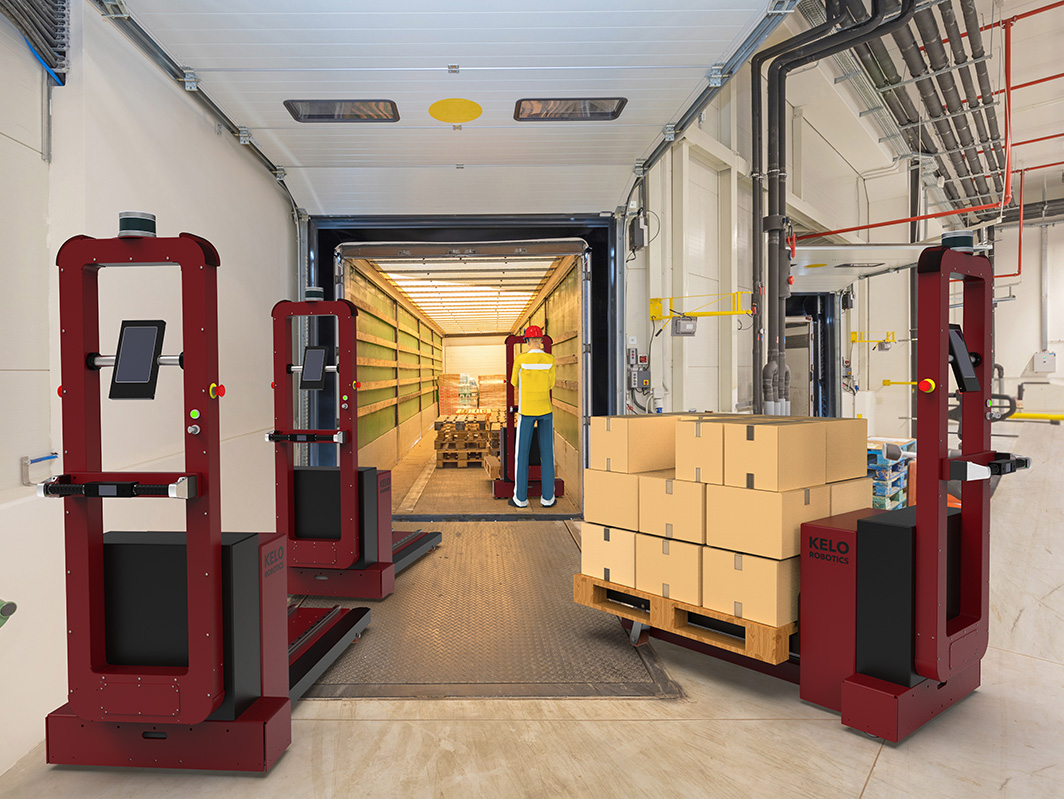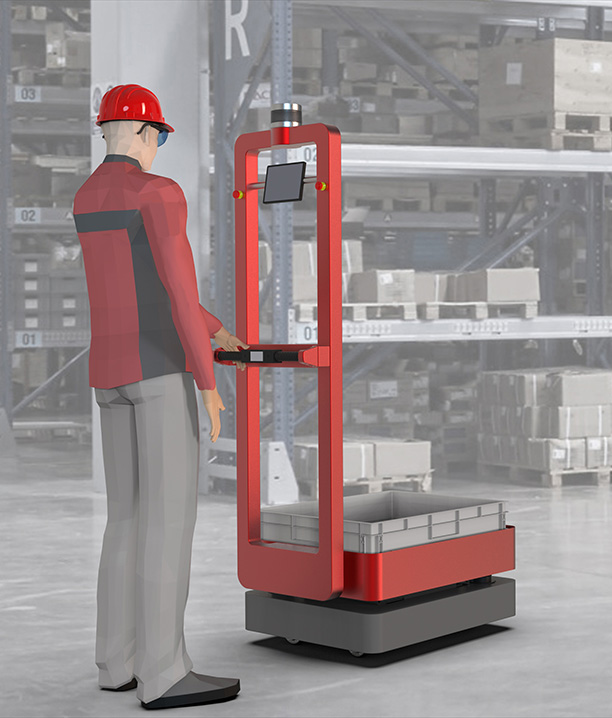Use case “Loading and unloading pallets from truck trailers”

1) This calculation is model calculation. Actual numbers have to be validated on a case by case basis.
2) With two workers and two groups of robots un-/loading time can be reduced to 15 min with a performance gain of 60%.
Annual cost for unproductive idle times
|
€ 419,500 bn |
|
€ 196,250 bn |
|
€ 66,250 bn |
|
€ 13,250 bn |
A pain point in warehouse operation: unproductive idle times when loading and unloading trucks
The pain in numbers for a single warehouse 1):
|
60 min |
|
30 – 45 min |
|
100 min |
|
60 € |
|
100 € |
| Cost for waiting and un-/loading for a warehouse with 100 operations per day: | 10.000 € |
Our solution: human robot collaboration better than full automation
- A fleet of robots is commanded to the loading bay behind a docked truck trailer.
- There, the robots line up in a stand-by position and wait for an interaction by a worker.
- In this operation mode, the robots can be moved freely around by a user using the haptic interface and can be used like a manual pallet truck.
- The worker grabs the next robot, moves it under the next free pallet, lifts the pallet und pulls the robot with pallet until it is clear.
- When the worker presses the “Resume” button the robot takes over control again, autonomously moves load to storage position, and drops it there.
- The robot returns to loading bay until the fleet management reports the completion of task.
The gain in numbers:
|
40% |
|
25 min |
|
18 months |
